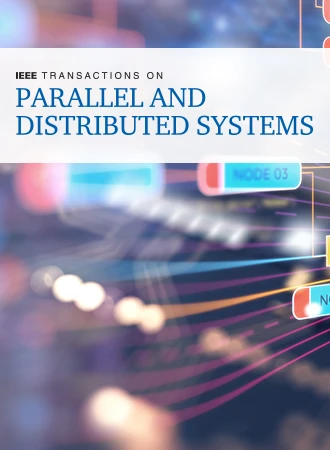DynPipe:面向干扰感知深度神经网络训练的动态端到端管道并行
IF 6
2区 计算机科学
Q1 COMPUTER SCIENCE, THEORY & METHODS
IEEE Transactions on Parallel and Distributed Systems
Pub Date : 2025-09-03
DOI:10.1109/TPDS.2025.3605491
引用次数: 0
摘要
管道并行已经成为训练大型深度神经网络不可或缺的技术。虽然现有的异步管道系统解决了同步体系结构中固有的时间气泡,但由于其次优和静态配置,它们仍然存在效率低下和易受硬件环境影响的问题。在本文中,我们提出了DynPipe,一个干扰感知异步管道框架,以优化高动态计算环境下的端到端训练性能。通过描述非重叠的通信开销和基于阶段成熟度的收敛速度,DynPipe精心设计了一个优化的管道分区,使硬件速度与统计收敛相协调。此外,DynPipe部署了非侵入式随机森林模型,该模型利用运行时阶段统计来评估任务干扰和网络抖动等环境变化对训练效率的影响。根据评估指导,DynPipe自适应调整分区计划,恢复级内和级间的负载平衡,从而实现动态环境下管道的无缝重构。大量实验表明,DynPipe优于最先进的系统,可将精确时间缩短1.5-3.4倍。本文章由计算机程序翻译,如有差异,请以英文原文为准。
DynPipe: Toward Dynamic End-to-End Pipeline Parallelism for Interference-Aware DNN Training
Pipeline parallelism has emerged as an indispensable technique for training large deep neural networks. While existing asynchronous pipeline systems address the time bubbles inherent in synchronous architectures, they continue to suffer from inefficiency and susceptibility to volatile hardware environment due to their suboptimal and static configurations. In this article, we propose DynPipe, an interference-aware asynchronous pipeline framework to optimize the end-to-end training performance in highly dynamic computing environments. By characterizing the non-overlapped communication overheads and convergence rate conditioned on stage-wise staleness, DynPipe carefully crafts an optimized pipeline partition that harmonizes the hardware speed with statistical convergence. Moreover, DynPipe deploys a non-intrusive random forest model that utilizes runtime stage statistics to evaluate the impact of environmental changes, such as task interference and network jitter, on the training efficiency. Following the evaluation guidance, DynPipe adaptively adjusts partition plan to restore both intra and inter-stage load balancing, thereby facilitating seamless pipeline reconfiguration in dynamic environments. Extensive experiments show that DynPipe outperforms state-of-the-art systems, accelerating the time-to-accuracy by 1.5-3.4×.
求助全文
通过发布文献求助,成功后即可免费获取论文全文。
去求助
来源期刊

IEEE Transactions on Parallel and Distributed Systems
工程技术-工程:电子与电气
CiteScore
11.00
自引率
9.40%
发文量
281
审稿时长
5.6 months
期刊介绍:
IEEE Transactions on Parallel and Distributed Systems (TPDS) is published monthly. It publishes a range of papers, comments on previously published papers, and survey articles that deal with the parallel and distributed systems research areas of current importance to our readers. Particular areas of interest include, but are not limited to:
a) Parallel and distributed algorithms, focusing on topics such as: models of computation; numerical, combinatorial, and data-intensive parallel algorithms, scalability of algorithms and data structures for parallel and distributed systems, communication and synchronization protocols, network algorithms, scheduling, and load balancing.
b) Applications of parallel and distributed computing, including computational and data-enabled science and engineering, big data applications, parallel crowd sourcing, large-scale social network analysis, management of big data, cloud and grid computing, scientific and biomedical applications, mobile computing, and cyber-physical systems.
c) Parallel and distributed architectures, including architectures for instruction-level and thread-level parallelism; design, analysis, implementation, fault resilience and performance measurements of multiple-processor systems; multicore processors, heterogeneous many-core systems; petascale and exascale systems designs; novel big data architectures; special purpose architectures, including graphics processors, signal processors, network processors, media accelerators, and other special purpose processors and accelerators; impact of technology on architecture; network and interconnect architectures; parallel I/O and storage systems; architecture of the memory hierarchy; power-efficient and green computing architectures; dependable architectures; and performance modeling and evaluation.
d) Parallel and distributed software, including parallel and multicore programming languages and compilers, runtime systems, operating systems, Internet computing and web services, resource management including green computing, middleware for grids, clouds, and data centers, libraries, performance modeling and evaluation, parallel programming paradigms, and programming environments and tools.
 求助内容:
求助内容: 应助结果提醒方式:
应助结果提醒方式:


